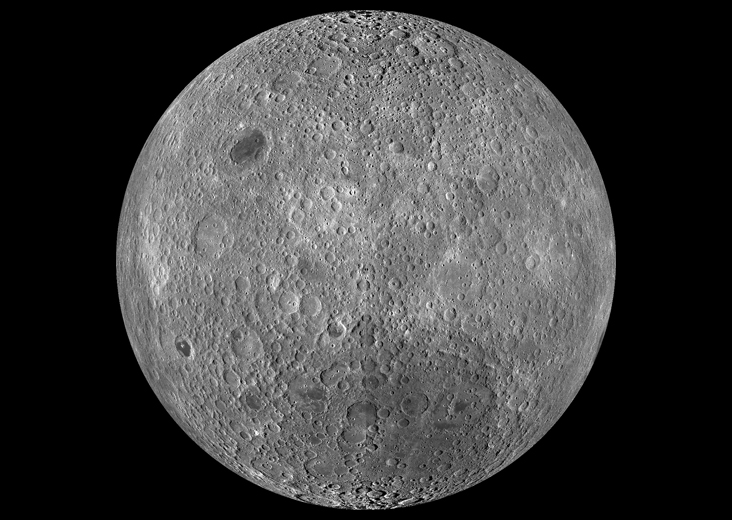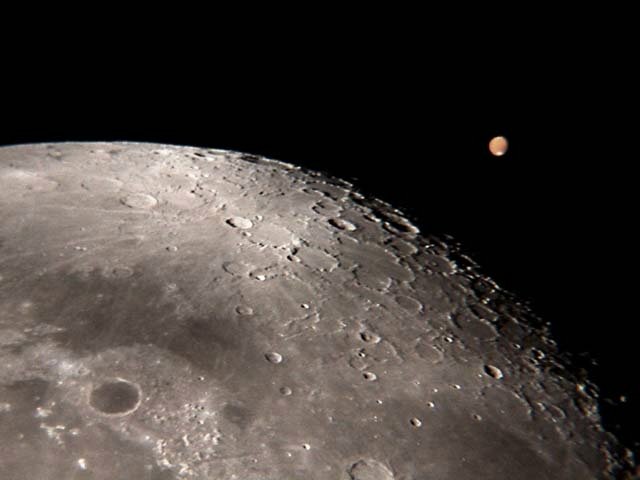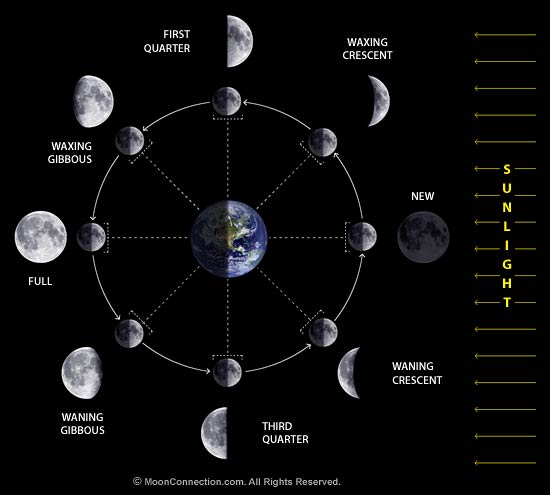The Moon is the closest celestial object to Earth. It is the brightest object in the night sky and has a huge influence over the Earth matched only by the influence that the Sun has.
The Moon is about a quarter of the size of Earth and lies on average 384,400km away. It has an elliptical orbit so sometimes it is as close as 363,300km and sometimes as far as 405,500km.
It takes 27.32 days for it to orbit the Earth, this is called a sidereal month: the amount of time it takes for it to return to the same position in the sky relative to the stars. But to complete its cycle of phases, it actually takes slightly longer (29.53 days) because the Earth is moving. This page has a diagram to help visualise this and explains further.
The Moon takes 27.32 days to spin on its axis. Because it takes this long to orbit the Earth, we only ever see one side of the Moon. We call this the "near-side".
This side is a lot more interesting to look at than the far-side so it is lucky that it faces us. Dark patches on the surface are low lying land (called mare) and these once contained lava flows. The lighter areas are high lands. You can also see that the moon is littered with craters from a very brutal past. But because the orbit is elliptical, it is sometimes closer to Earth. When it is closer, it spins a little bit faster, so sometimes we can see about 9% of the far-side.
As mentioned earlier, the Moon has a great influence over the Earth. The most obvious one is tides. The Moon's gravity pulls oceans out. This gives Earth a bit of a bulge, but on the coasts, it also makes the tides go further out during certain times of the day. A less obvious effect of this is that the friction between the oceans and the Earth is causing the Earth to slow down its spin.In fact, the Earth's day was about 3 hours shorter 350 million years ago!
The Moon is only visible because of the light that bounces off from the Sun. Because the Earth, Moon and Sun are at different angles to each other the moon appears in phases.
- New Moon
- Waxing Crescent
- First Quarter
- Waxing Gibbous
- Full Moon
- Waning Gibbous
- Third Quarter
- Waning Crescent







